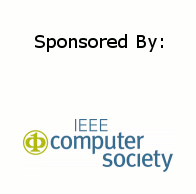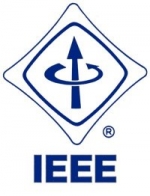Simple Conference Schedule
| Time | Topic | |
| 9:30 AM - 10:30AM | Dr. Lotfi Zadeh, UC Berkeley | "Precisiation of Meaning--From Natural Language to Granular Computing" - GrC 2010 Keynote |
| 10:30 AM - 10:50AM | Coffee Break | |
| 10:50 AM - 11:30 AM | Dr. Benjamin Reed, Yahoo! | "ZooKeeper" - CW 2010/NFIC Keynote |
| 11:30 AM - 12:00 PM | Mr. Pradeep Kathail, Cisco | "Management of Large Networks" |
| 12:00 PM - 1:30 PM | Lunch | |
| 1:30 PM - 2:00 PM | Mr. Patrick Fu, CCMA ITRI | "Energy Efficient Virtual Resource Management" |
| 2:00 PM - 2:30 PM | Professor Chen Li, UC Irvine | "Scalable Interactive Search" |
| 2:30 PM - 3:00 PM | Coffee Break | |
| 3:00 PM - 3:30 PM | Professor Felix Naumann, HPI | "Extreme Web Data Integration" |
| 3:30 PM - 4:00 PM | Dr. Rajasekar Krishnamurthy, IBM Almaden Research Center | "Midas: Scalable Entity Integration for Unstructured Data Sources" |
Conference Topics and Abstracts
| Time | Speaker | Abstract |
| 9:30 AM - 10:30AM | Dr. Lotfi Zadeh, UC Berkeley | "Precisiation of Meaning--From Natural Language to Granular
Computing" - GrC 2010 Keynote
Unprecisiated (raw) natural language does not lend itself to computation. Natural languages are intrinsically imprecise. A major source of imprecision is unsharpness of class boundaries. Unsharpness of class boundaries is coextensive with fuzziness. In this perspective, most human concepts are fuzzy. Everyday examples are near, fast, sweet, similar, etc. To deal with fuzzy concepts what is needed is fuzzy logic. Computing with Words is based on fuzzy logic. A CW engine has two principal components: a Precisiation module and a Computation module. The function of the Precisiation module is that of constructing a computational model of the information, I, which is to be computed with. In CW, a computational model of a proposition, p, drawn from a natural language, is represented as a generalized constraint. Precisiated I is the input to the Computation module. Computation is carried out through propagation and counterpropagation of generalized constraints. What comes into play at this stage is the machinery of Granular Computing, GrC. In this machinery, a principal tool is the Extension Principle of fuzzy logic. Application of this principle reduces the problem of computation with natural language to that of solving a mathematical program. |
| 10:30 AM - 10:50AM | Coffee Break | |
| 10:50 AM - 11:30 AM | Dr. Benjamin Reed, Yahoo! | "ZooKeeper" - CW 2010/NFIC Keynote
Large distributed systems, aka Cloud Computing, are a Zoo: machines being added and removed, configuration changes, usage spikes, and load balancing; distributed applications must also handle failures such as network partitions and crashes. We developed ZooKeeper to help the distributed application developer build applications in this chaotic environment. It provides a simple abstraction for coordination that developers can use extensively to handle changes and failures. In our experience, applications that use ZooKeeper are not only more robust but also easier to develop than those using ad-hoc solutions. This talk will motivate the design of ZooKeeper, show how it is used, and share insights gained from its use in production. |
| 11:30 AM - 12:00 PM | Mr. Pradeep Kathail, Cisco | "Management of Large Networks"
Continuous growth of internet and new green field usage like Smart Grid is challenging the traditional centralized way of managing the networks. Network management needs to be more granular and network devices need to make some autonomous decisions in consultation with the neighboring device within the policy set by central management entity. This new paradigm will distribute the management load, and make the network truly self-healing. |
| 12:00 PM - 1:30 PM | Lunch | |
| 1:30 PM - 2:00 PM | Mr. Patrick Fu, CCMA ITRI | "Energy Efficient Virtual Resource Management"
Taiwan has long been very successful in its OEM/ODM business for building Enterprise class servers. ITRI sees an opportunity for Taiwan’s ODM industry to elevate itself and build a complete solution for Cloud Computing. This will enable service providers and data center operators to quickly launch an “Infrastructure Cloud” based on commodity hardware at a significantly lower cost. Thus, CCMA @ ITRI (Cloud-Computing Center for Mobile Application) was founded in September, 2009. One of the projects CCMA will be working on is Cloud OS. Cloud OS includes many components to efficiently manage virtual and physical resources in the “Infrastructure Cloud” mentioned above. This talk focuses, in particular, on the Resource Monitoring component of Cloud OS and how it leverages the virtualization platform to manage a Virtual Data Center and optimize the use of its resources. Cloud OS has built in triggering mechanisms to develop a virtual resource consolidation plan and migrate virtual resources onto under-utilized hardware to optimize energy usage in the Cloud OS “Infrastructure Cloud”. |
| 2:00 PM - 2:30 PM | Professor Chen Li, UC Irvine | "Scalable Interactive Search"
Traditional information systems return answers after a user submits a complete query. Users often feel "left in the dark" when they have limited knowledge about the underlying data, and have to use a try-and-see approach for finding information. A recent trend of supporting autocomplete in these systems is a first step towards solving this problem. In this talk we will discuss a new information-access paradigm, called "interactive search" or "search as you type," which allows users to search and explore underlying data as they type in query keywords. We focus on how to answer such search queries on large data sets efficiently (within milliseconds per query) in order to achieve an interactive speed. For illustration purposes, we will demonstrate several systems powered by these techniques. |
| 2:30 PM - 3:00 PM | Coffee Break | |
| 3:00 PM - 3:30 PM | Professor Felix Naumann, HPI | "Extreme Web Data Integration"
The wealth of freely available, structured information on the Web is constantly growing. This is especially true for public data from and about governments and administrations. Data-providing projects, such as DBpedia and Freebase from the linked open data community, as well as structured data from domain-specific sites, such as senate.gov or UniProt.org, make it possible to integrate data from multiple sources and thus create new data sets with added value. The talk highlights the extreme heterogeneities of such web data and points to methods to overcome them: To make use of this data and create added value for a given domain of interest, a multitude of tasks must be completed: Source selection to identify appropriate and high quality sources, data extraction to create structured data, scrubbing to standardize and clean data, entity matching to associate different occurrences of the same entity, and finally data transformation and data fusion to combine all data about an entity in a single, consistent representation. |
| 3:30 PM - 4:00 PM | Dr. Rajasekar Krishnamurthy, IBM Almaden Research Center | "Midas: Scalable Entity Integration for Unstructured Data Sources"
There are a large number of publicly available data sources containing rich information about entities, relationships and events. For instance, publicly traded companies file documents periodically with regulatory agencies such as SEC and FDIC describing their financial activities and their relationships with other companies and people. While this information is of crucial interest to investors, financial analysts and bankers, accessing the wealth of structured entity information buried in unstructured text is a non-trivial task. The primary goal of the Midas project is to address scenarios such as the above that depend on large-scale unstructured entity integration. To address this challenge, we are building a system that enables easy and scalable integration of unstructured and semi-structured information present across multiple data sources. In this talk, we highlight some of the main technological challenges that need to be addressed in order to transform the data from a document or record view of the world to an entity-centric view, where multiple facts about the same real-world entity are merged into one object with, ideally, clean and complete attributes. The main challenges addressed by Midas are (a) unstructured information extraction (e.g., extraction of various facts from the multitude of text or html documents), (b) entity integration (resolving and merging references to the same real-world entity and creating correct relationships among the resulting objects) and (c) scalable platform (building a scalable Hadoop-based system for processing large volumes of data in an incremental fashion). |


